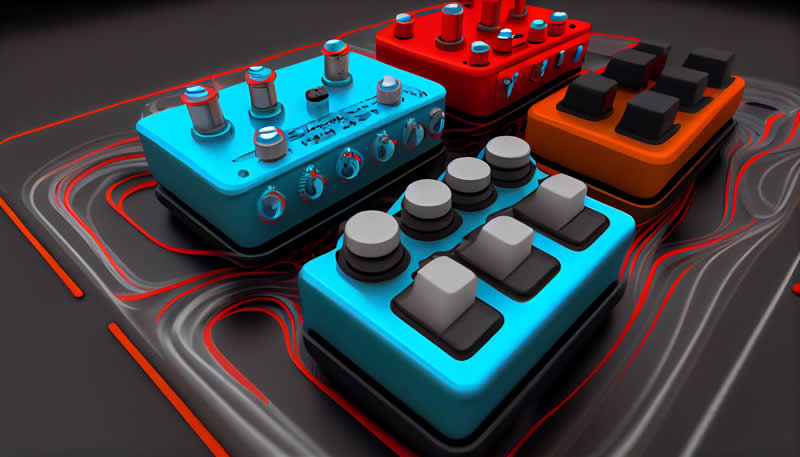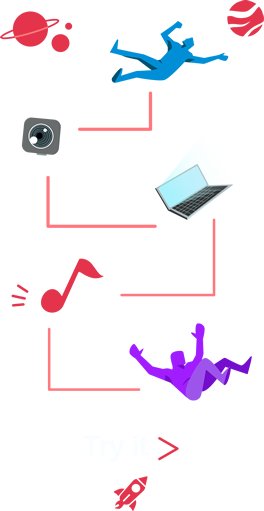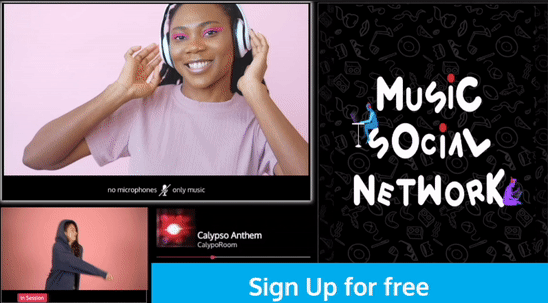How to use a guitar pedal: best tips for beginners (with videos)
Guitar pedals are small electrical devices that change the sound of your guitar, often known as effects pedals or stomp boxes. Traditionally, guitar effects pedals were used to create wah-wah, delay, overdrive, and distortion sounds. However, you may also utilize effects pedals to regulate your guitar's loudness, equalization, and other fundamental tonal characteristics.
In this blog article, we'll discuss the ideal configurations for connecting guitar pedals to your instrument and amplifier, with a focus on beginner-friendly advice. Let’s start!
What is a guitar pedal?
Guitar pedals are a crucial component in modifying the sound your guitar produces. In their most basic form, pedals are little metal boxes that contain electrical circuitry that you tread on to activate, thus the colloquial moniker "stompbox." Depending on what it's designed to do, it may drive, distort, modulate, reverberate, and more once it's switched on.
Your overall tone is influenced by your amplifier and guitar, but a guitar pedal may enhance it. There are countless effects to experiment with, ranging from little adjustments to drastic and tone-defining modifications. Use pedals to expand your playing's creative possibilities or to just enhance the sound in general.
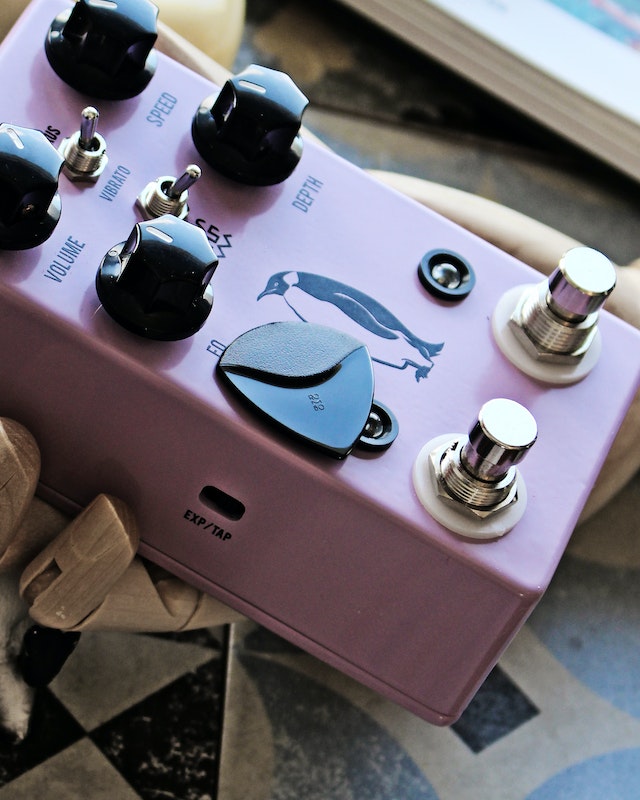
Why do I need a guitar pedal?
To put it simply, guitar effects are used to enhance your tone compared to what it would sound like with just a guitar and amplifier or to produce intriguing tonal textures. The bulk of guitar rigs consist of reverb, overdrive, and a few specific modulations.
To obtain a sense of the sound they produce, it is advisable for a novice to stick with stompboxes that are moderately priced and easy to controls. Try out some more unusual effects once you've gained this fundamental understanding.
Connecting a Pedal
The pedal needs a 9-volt battery to function
Turn the screws on the sides or bottom of the pedal counterclockwise to remove them. To reach the 9-volt battery hookup on the bottom of the pedal, slide off the faceplate next. Connect the battery's negative and positive ends to the negative and positive ends of your pedal to power it.
You don't need to plug the pedal into a power source if you use batteries. When the batteries are running low, certain pedals include a red warning light that illuminates. If you're unclear of how to reach the battery hookup for your particular pedal, see the user guide that came with it.
Use the pedal's electrical plug instead of batteries
You may also plug your effects pedal straight into an Ac source if you don't want to take the chance of your batteries running out in the middle of a song. Typically, the top or side of the pedal is where the 9-volt power wire input may be located. A 9-volt power cord may be purchased online or at a guitar shop.
Your pedal's output jack should be connected to a guitar cable
A 14-inch (6.4 mm) guitar chord is commonly used with pedals and amplifiers. One end of the line should go into the pedal's output jack. To connect from the pedal to your amp, this cord must be long enough. Whichever cable end you connect to the pedal doesn't matter.
For various sounds, connect many pedals together
A guitar cable can be used to connect many pedals together. The connection from one pedal's output jack should be plugged into the second pedal's input jack. Using this technique, you may connect as many pedals as you like. The effects will blend if more than one pedal is used at once.
The input jack on your amp should be connected to the cord's opposite end
The input jack on the amp should be linked to the opposite end of the same cable that is plugged into the output jack on your pedal. The cable has to go from the pedal to the amplifier. Connect the final pedal in your lineup to the amp if you're using several pedals.
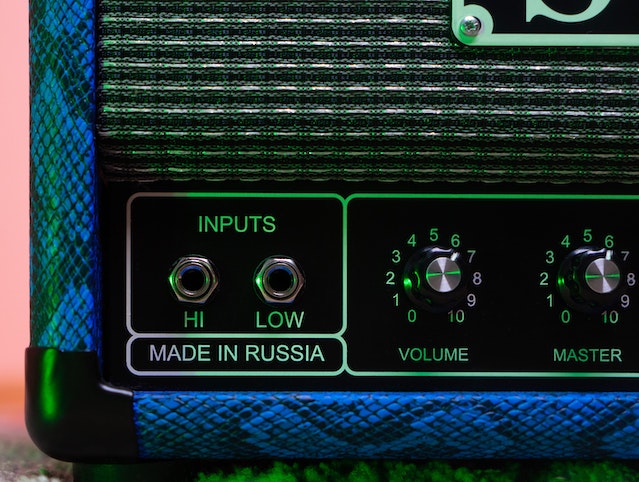
Put a guitar cable into the pedal's input jack
Use a different, unrelated guitar cable, and insert it into the input jack on your pedal. This guitar wire has to be long enough to connect your instrument to the pedal.
The other end of the wire should go into your guitar
Your guitar's cable jack is often located on the instrument's body. Put the cord's opposite end into the single jack on your instrument, then enter the other end into the input jack on your pedal. You've now prepared your effects pedal.
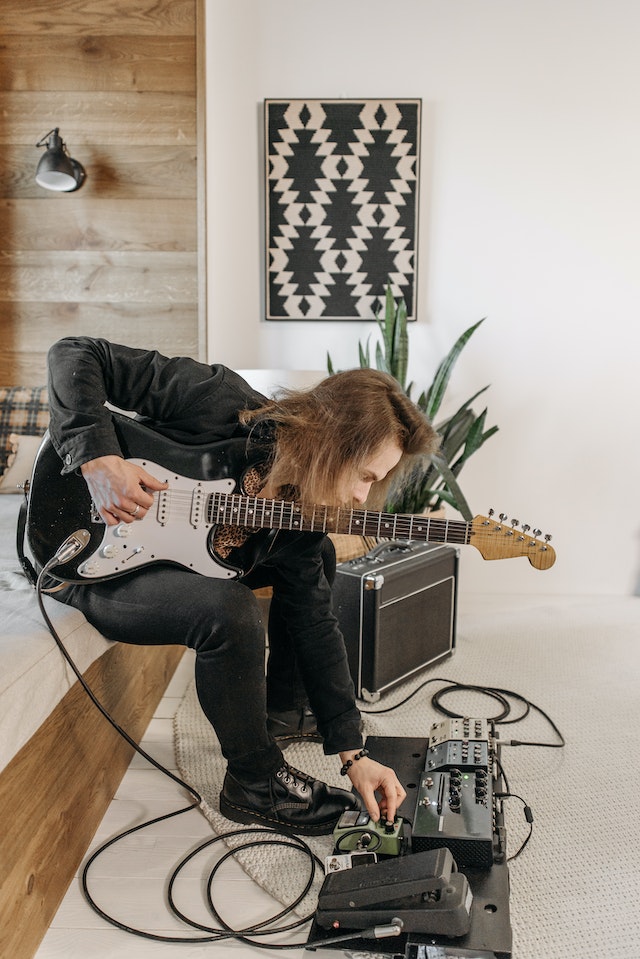
How to use an effects pedal while playing guitar
When utilizing pedals that modify volume and gain, lower the volume
When playing your guitar, effects pedals like overdrive and boost may significantly raise the frequency, loudness, and gain. Once you begin playing notes, turn your amp's level down to prevent blowing out the speakers.
Turn on your amplifier, then strum a string
Turn the amp's front-mounted switch to the "on" position. Because the pedal is not yet active, the sound should be exactly the same as if you plugged the guitar straight into the amplifier. Check to see whether the wires connecting the pedal to the guitar and amplifier are properly plugged in and in excellent operating condition if your amplifier isn't producing any sound.
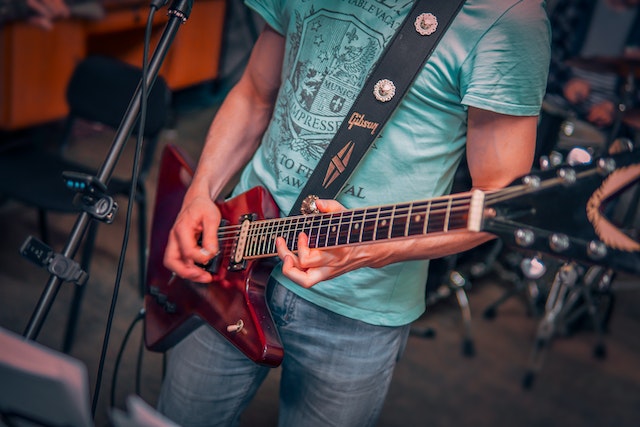
To activate the effects pedal, press down on it with your foot
The effects are activated by pressing the pedal, which should cause the guitar sound coming from the amplifier to alter and become distorted. Take note of the unusual sound when you try playing what you would typically play. The effects pedal allows you to alter the tone of your guitar during a full song or just during a selected section.
To alter the pedal's tone, turn the knobs
Different knobs that control the distortion's tone, loudness, and severity are included with each pedal. Turn the knobs up and down while playing notes to experiment and hear how the tone of your guitar changes. The treble and bass tones of your guitar will change depending on how much you crank the tone knob up or down.
How to use a guitar pedal - Conclusion
You should be able to set up and use a guitar pedal now that you are familiar with how it generally functions. Now is your time to pick up your favorite electric guitar and begin experimenting with one (or more) of the numerous guitar pedals you can find out there!
We hope you enjoyed reading this post, and if you'd want more career-related guidance, on our blog section, there are many more beneficial articles, advice, and recommendations to be found.
You are undoubtedly here because you love music, so please take advantage of the chance to listen to it while interacting with other users via webcam in CalypsoRoom.
In CalypsoRoom we believe music is the most powerful tool to bring people together, and that’s why we created a music social network online where you can meet friends or new people starting from the same song, listening to the music simultaneously connected by webcam.
Are you a music artist or label and do you want to give your music a further dimension? Do you own or co-own the master and publishing rights to your music? Consider to post it on CalypsoRoom listening to it together with your super fans, at the same time, connected by webcams.
Thanks for reading,
CalypsoRoom Team
back
Written by CalypsoRoom Editorial Team
The CalypsoRoom Editorial Team is a skilled and diverse group of writers, researchers, and industry specialists who have access to Calypso's data and information in order to give you broad knowledge about the music industry as well as helpful advice to help you manage your music and dancing career.
Updated January 2023
Company number: 681223
James's Walk 31, Dublin, Ireland
contact@calypsoroom.com
+353 (89) 435 8928

